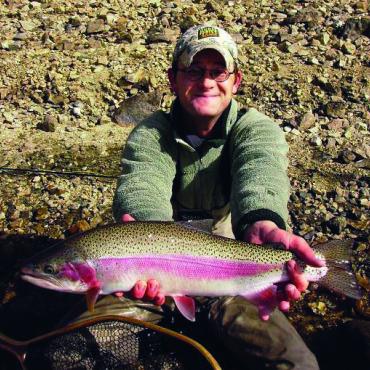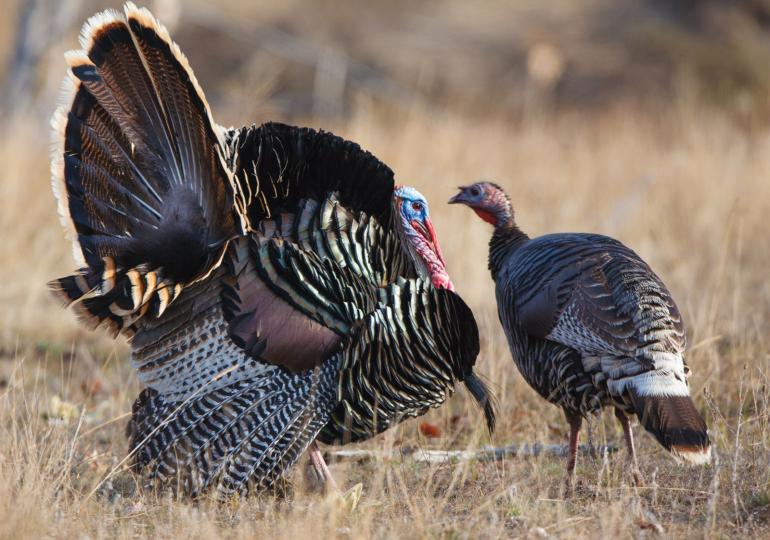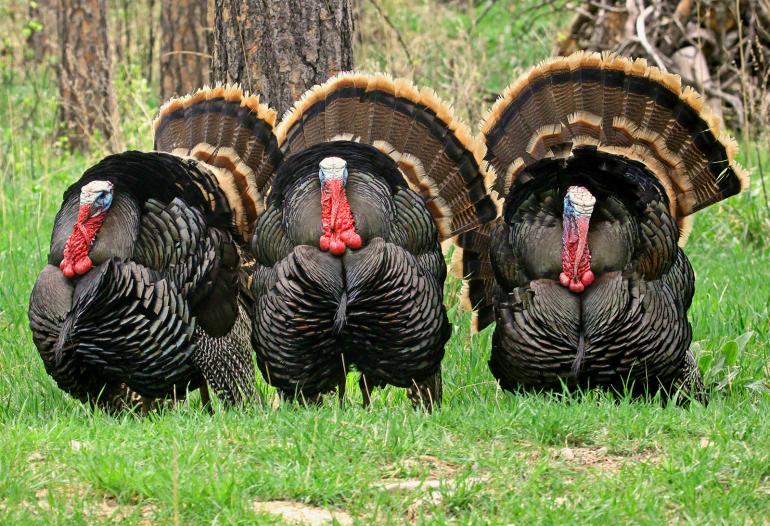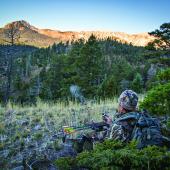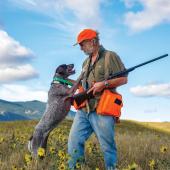Turkey Dinner
Chasing the wild centerpiece to a Thanksgiving meal.
Wild turkeys, not unlike their namesake whiskey, can bring an otherwise sane person to the heights of elation, the depths of depression, or the brink of madness. While not native to the state of Montana, this wily fowl has proven its staying power against our harsh climate, numerous predators, and legions of experienced hunters. While the bulk of the turkey population resides in the state’s eastern reaches, good-sized flocks do exist in several areas in the western and southwestern parts of the state.
Habitat
In 1954, state biologists introduced 13 birds from Colorado to an area around the Judith Mountains in south-central Montana. The second release of birds took place the following year near Ashland. This introduction used 18 birds from Wyoming that proved hearty enough; after 1957, out-of-state birds were no longer needed.
The Merriam’s turkey has about as much in common with its domestic brethren as a wolf does with a Yorkie.
Turkeys need washes, coulees, roosting areas, and plenty of food and water in order to survive. Fortunately, the river-bottom habitat, combined with the agriculture food source provided by Montana’s farmers and ranchers, has proven a boon to the state’s wild-turkey population. Turkeys tend to forage along the edges of grain, barley, and hay fields, but when pressed for food will venture relatively far from these sheltered areas. Due to their tough nature, wild turkeys will often share habitat with sharp-tailed grouse, partridge, pheasants, and white-tailed deer.
Behavior
The Merriam’s turkey has about as much in common with its domestic brethren as a wolf does with a Yorkie. Wild turkeys have keen color vision, excellent hearing, and a complex communication system that can alert an entire flock to danger with just one cluck or yelp. Mature males (toms) have a prominent purplish-red neck wattle, blue-to-whitish head, a beard, and long spurs on their legs. Females are slightly smaller, less colorful, and usually lack the beard. The back and breast feathers of the female are tipped with a tannish-white, while those of the male are almost jet-black, depending on maturity. The average adult male can be up to 48 inches tall and weigh in at over 16 pounds. Conversely, the mature hen will usually be about 34 inches tall and weigh only nine pounds. Turkeys’ cunning and adaptability make them more like elk when it comes to the skill level required to successfully hunt them. Plan on spending a lot of time walking, and even more time glassing. Look for likely roosting areas, feeding grounds, and watering holes. Plan on being out long before sunup, and long after sundown.
Most turkey-hunting takes place in the spring, during the mating season, when males strut their stuff to impress hens and earn the right to breed. A big tom flaunting his voluminous plumage is a sight to behold, and also an opportunity for the clumsy human hunter to outwit these otherwise-wily critters. Hunt them like bull elk in the rut: gobble to locate, then call them in with clucks, cuts, and yelps. Successfully mimicking a female turkey takes a long time and lots of practice, so expect to fail—many times—before fooling a table-worthy tom.
Most turkey-hunting takes place in the spring, during the mating season, when males strut their stuff to impress hens and earn the right to breed.
Gear
Depending on the season and hunting district, turkeys can be taken with archery equipment, shotgun, or rifle. For the archer, do some research on the preferred arrows and broadhead set-up for birds, and remember that most of your shots will have to be taken from a sitting or kneeling position. For shotgunners, the trusty 12-gauge is field-proven, with a full choke and #2 or #4 shot. Turkeys are big, and those feathers can act like armor plating, so it’s best to get as close as you can and aim for that big colorful head.
Regs
Turkey hunting in the state of Montana is highly specific, and regulations are regionally specific. Historically, only the eastern portions of the state offered over-the-counter tags, but 2018 saw a loosening of restrictions, with special permits no longer being required in other regions, including Region 3. Restrictions vary based on annual population surveys, though, so always check fwp.mt.gov for up-to-date regs.
Kurt Dehmer owns Durty Kurty’s Guide Service.

